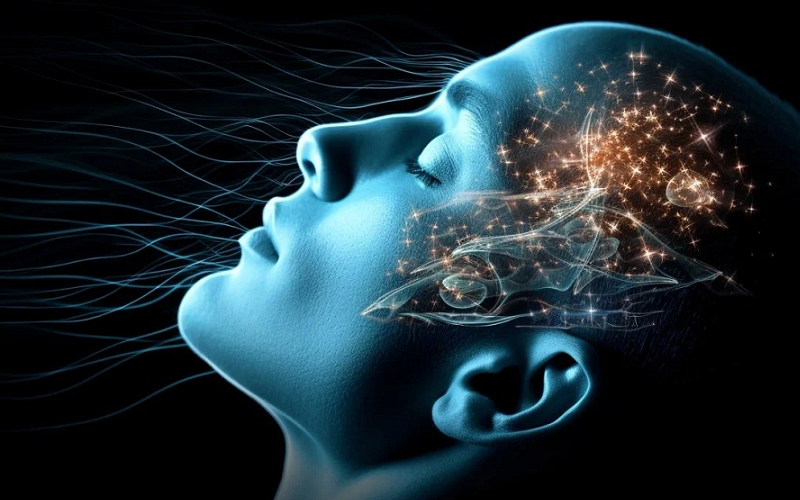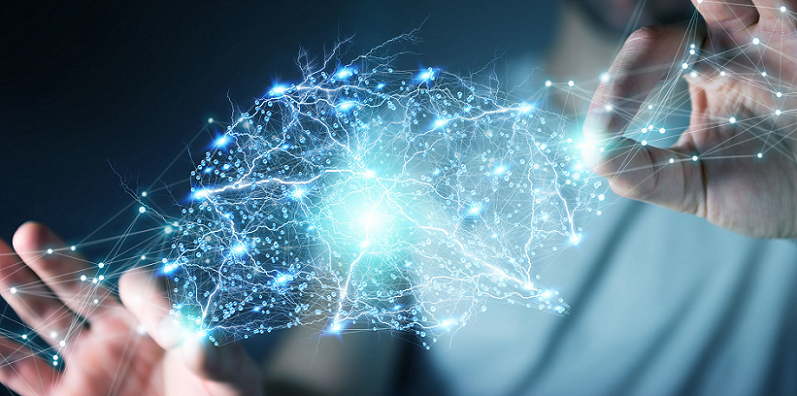
In the intricate symphony of our body’s functions, hormones play the role of crucial conductors, influencing everything from growth and metabolism to mood and cognition. One such maestro that has recently garnered significant attention in the realm of neuroscience is the prokineticin family. While perhaps lesser-known to the layperson, prokineticins are pivotal in modulating various physiological processes, notably our internal biological clocks or circadian rhythms. These rhythms govern not just when we feel awake or sleepy, but have profound impacts on our overall brain health, cognitive function, and even mood.
Contents
- What are Prokineticins?
- Prokineticins and Circadian Rhythms
- Beyond Circadian Rhythms: Other Cognitive Impacts of Prokineticins
- References
What are Prokineticins?
Prokineticins are a fascinating set of proteins that, though less mainstream in common health discussions, play an integral role in many bodily processes. Their multifaceted functions span from modulating pain perception to regulating angiogenesis, a process responsible for the formation of new blood vessels.
Definition and Primary Structure of Prokineticins
Prokineticins are a family of secreted proteins consisting of two primary members: Prokineticin 1 (PK1) and Prokineticin 2 (PK2). Both these proteins are characterized by a structural fold comprising ten cysteine residues, forming a unique sequence that differentiates them from other proteins. This cysteine-rich sequence allows prokineticins to interact with their respective receptors – Prokineticin Receptor 1 (PKR1) and Prokineticin Receptor 2 (PKR2) – and mediate various physiological effects.
Source and Production of Prokineticins in the Human Body
Our body is a sophisticated system with specialized cells and tissues dedicated to producing various proteins, including prokineticins. PK1 is predominantly found in tissues associated with angiogenesis, such as the endocrine glands and ovaries. On the other hand, PK2 is more abundant in the testes and brain, particularly in the region responsible for our circadian rhythms: the suprachiasmatic nucleus (SCN). Their distinct distribution in the body underscores their diverse roles and significance in different physiological processes.
Key Functions of Prokineticins at a Glance
While our focus today centers on the cognitive impacts of prokineticins, it’s essential to appreciate their broader functionalities:
Angiogenesis Regulation
As mentioned earlier, PK1 plays a central role in regulating the formation of new blood vessels. This is crucial not just for wound healing, but also for organ growth and development.
Pain Modulation
Prokineticins have been linked to modulating pain perception, especially in inflammatory conditions. They can influence our body’s response to pain, which has implications for conditions like arthritis.
Reproductive Functions
Prokineticins play a role in various reproductive processes, including the regulation of testicular functions and the cyclic changes in the female reproductive tract.
Circadian Rhythm Regulation
PK2, given its presence in the SCN, is instrumental in modulating our body’s internal clock. We’ll delve deeper into this role in subsequent sections [1].

Prokineticins and Circadian Rhythms
When we consider the vast universe of our body’s biological processes, circadian rhythms hold a special place, given their influence over our daily lives. These rhythms help our body adapt to the predictable changes brought on by the rotation of the Earth, ensuring our physiological functions are aligned with the day-night cycle. As we peel back the layers of this intricate system, we find prokineticins, particularly Prokineticin 2, playing a pivotal role.
Definition of Circadian Rhythms
Circadian rhythms are innate biological cycles, lasting approximately 24 hours, that dictate a host of physiological processes in nearly all living organisms, from the tiniest microbes to humans.
Importance to Brain and Overall Health
Our internal clocks govern more than just our sleep-wake cycle. They regulate body temperature, hormone release, cognitive functions, and even mood. A well-synchronized circadian rhythm ensures optimal functioning and well-being, whereas disruptions can lead to a host of health issues ranging from insomnia and mood disorders to metabolic problems and increased susceptibility to chronic diseases.
Factors Influencing Circadian Rhythms
While our body has an innate sense of this 24-hour cycle, external cues, called zeitgebers (German for “time-givers”), like light and temperature, play crucial roles in fine-tuning our rhythms. Exposure to natural daylight, for instance, signals our brain to stay alert, whereas the advent of dusk prompts the production of melatonin, ushering in sleepiness [2].
How Prokineticins Regulate Circadian Rhythms
Diving deeper into the intricate mechanics of our internal clock, prokineticins emerge as crucial regulators, bridging external cues with internal processes.
Interaction with the Suprachiasmatic Nucleus (SCN)
Situated in the hypothalamus, the SCN is often dubbed the “master clock” of our body. PK2, with its pronounced presence in the SCN, communicates with the clock’s neurons. When exposed to light, our retina sends signals to the SCN, where PK2 then facilitates the transmission of this information, ensuring our internal rhythms are aligned with the external environment.
Role in Modulating Sleep-Wake Cycles
PK2 doesn’t merely stop at the SCN. Once the light cues are processed, PK2 influences the secretion of melatonin, a hormone crucial for inducing sleep. A balance in PK2 levels, therefore, is vital for maintaining a regular sleep-wake cycle.
Potential Impacts of Disrupted Prokineticin Levels on Circadian Rhythms
But what happens when the delicate balance of prokineticins is thrown off-kilter?
Sleep Disorders
An imbalance in PK2 levels can disrupt the regular ebb and flow of our sleep-wake cycles. Individuals may experience insomnia, excessive daytime sleepiness, or fragmented sleep patterns, which can have cascading impacts on overall health and cognitive function.
Impact on Mood and Cognitive Functions
Sleep isn’t the sole domain affected by circadian disruptions. Altered prokineticin levels can also influence mood, leading to feelings of depression or anxiety. Additionally, cognitive processes like attention, memory, and decision-making can be impaired, highlighting the far-reaching consequences of misaligned circadian rhythms [3].

Beyond Circadian Rhythms: Other Cognitive Impacts of Prokineticins
While the relationship between prokineticins and circadian rhythms paints a compelling picture of these proteins’ significance, the narrative hardly stops there. Prokineticins influence several facets of our cognitive processes and overall brain health, often in ways that are less immediately apparent but equally profound.
Role in Neurogenesis and Brain Plasticity
Neurogenesis, the birth of new neurons, and brain plasticity, the brain’s adaptability, are fundamental to our cognitive health and evolution.
Neurogenesis Enhancement
Recent studies have spotlighted prokineticins, specifically PK2, as potential enhancers of neurogenesis, especially in the hippocampus – a region pivotal for learning and memory. By fostering the growth of new neurons, prokineticins might contribute to better cognitive outcomes and resilience against age-related cognitive decline.
Promoting Synaptic Plasticity
Beyond just fostering new neurons, prokineticins also play a role in strengthening the connections between these cells, known as synapses. This synaptic plasticity ensures our brain remains adaptable, refining neural pathways based on experiences and learning [4].
Impact on Learning and Memory
The influence of prokineticins extends directly into the realm of cognition, especially in the areas of learning and memory.
Facilitating Memory Consolidation
With their influence on the hippocampus, prokineticins may assist in memory consolidation, the process of stabilizing and organizing memories for long-term storage.
Enhancing Cognitive Flexibility
Cognitive flexibility, our ability to adapt our thinking based on new information, may also benefit from prokineticins’ regulatory actions, offering potential avenues for therapeutic interventions in cognitive disorders.
Influence on Mood and Emotional Responses
Our emotional well-being and how we process feelings is another domain touched by prokineticins.
Mood Modulation
Research has linked imbalances in prokineticin levels to mood disorders like depression. Proper regulation of these proteins might offer avenues for mood stabilization and the treatment of related conditions [5].
Processing Emotional Stimuli
Preliminary studies suggest prokineticins might influence how we perceive and respond to emotional stimuli, potentially impacting areas like empathy, fear processing, and emotional memory.
Potential Protective Role Against Neurodegenerative Diseases
As the global population ages, neurodegenerative diseases like Alzheimer’s and Parkinson’s are of growing concern.
Anti-Inflammatory Actions
Chronic inflammation is a key player in many neurodegenerative conditions. Prokineticins, with their potential anti-inflammatory properties, might offer a line of defense against the progression of such diseases.
Promotion of Neuronal Survival
Beyond combating inflammation, prokineticins may directly promote neuronal survival, fostering resistance against the cell death typically seen in neurodegenerative disorders.
References
[1] Prokineticin-2 prevents neuronal cell deaths
[2] The Prokineticins: Neuromodulators and Mediators of Inflammation
[3] Expression of Prokineticins and Their Receptors
[4] Versatile Role of Prokineticins and Prokineticin Receptors in Neuroinflammation
[5] Biological Function of Prokineticins
